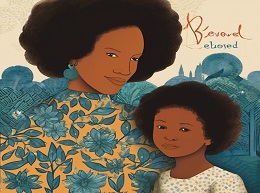To Kill a Mockingbird

"To Kill a Mockingbird" is a classic novel written by Harper Lee, published in 1960. The story is set in the racially charged atmosphere of the American South during the 1930s, and it explores themes of racial injustice, moral growth, and compassion. Here's a summary:
Setting:
The novel is set in the fictional town of Maycomb, Alabama, during the Great Depression. The narrative is primarily from the perspective of Scout Finch, a young girl, and her older brother Jem. Their father, Atticus Finch, is an attorney known for his strong moral character.
Characters:
-
Scout Finch: The narrator and protagonist of the story. Scout is a young girl who grows up during the events of the novel.
-
Jem Finch: Scout's older brother, who undergoes significant growth and maturation throughout the story.
-
Atticus Finch: The father of Scout and Jem, and a lawyer in Maycomb. Atticus is known for his moral integrity and is assigned to defend Tom Robinson, a black man falsely accused of raping a white woman.
-
Calpurnia: The Finch family's black housekeeper, who plays a significant role in raising Scout and Jem.
-
Boo Radley: A mysterious neighbor who is rarely seen. Boo becomes a central figure in the children's fascination and fear.
-
Tom Robinson: A black man accused of raping Mayella Ewell. Atticus defends him in court.
Plot Summary:
-
Introduction:
- Scout Finch narrates her childhood in Maycomb, introducing her family, friends, and the mysterious Boo Radley.
-
Atticus's Defense of Tom Robinson:
- Atticus Finch is appointed to defend Tom Robinson, a black man falsely accused of raping a white woman, Mayella Ewell. The trial becomes a focal point of the novel, highlighting the racial prejudice in the town.
-
Scout and Jem's Experiences:
- Scout and Jem befriend a boy named Dill, and the three children become fascinated with Boo Radley. They try to learn more about him, sparking both fear and curiosity.
-
Trial and Injustice:
- The trial of Tom Robinson reveals the deeply ingrained racism in Maycomb. Despite a compelling defense by Atticus, Tom is unjustly convicted.
-
Boo Radley's Intervention:
- The children's fascination with Boo Radley intensifies, and they eventually come into contact with him. Boo plays a crucial role in protecting them from danger.
-
Themes of Morality and Empathy:
- The novel explores themes of morality and empathy, especially through Atticus's teachings to his children. It challenges societal norms and prejudices.
-
Conclusion:
- The novel concludes with the revelation of Boo Radley's true nature and the children gaining a deeper understanding of the complexities of human behavior.
Themes:
-
Racial Injustice: The novel critiques the racial prejudice and injustice prevalent in the Southern United States during the 1930s.
-
Moral Growth: Scout and Jem's journey to understand the world around them and their moral development is a central theme.
-
Compassion and Empathy: The novel encourages readers to empathize with others and challenges the dehumanization caused by prejudice.
"To Kill a Mockingbird" is celebrated for its exploration of complex social issues, its portrayal of moral growth, and its timeless relevance in addressing themes of justice and compassion.













